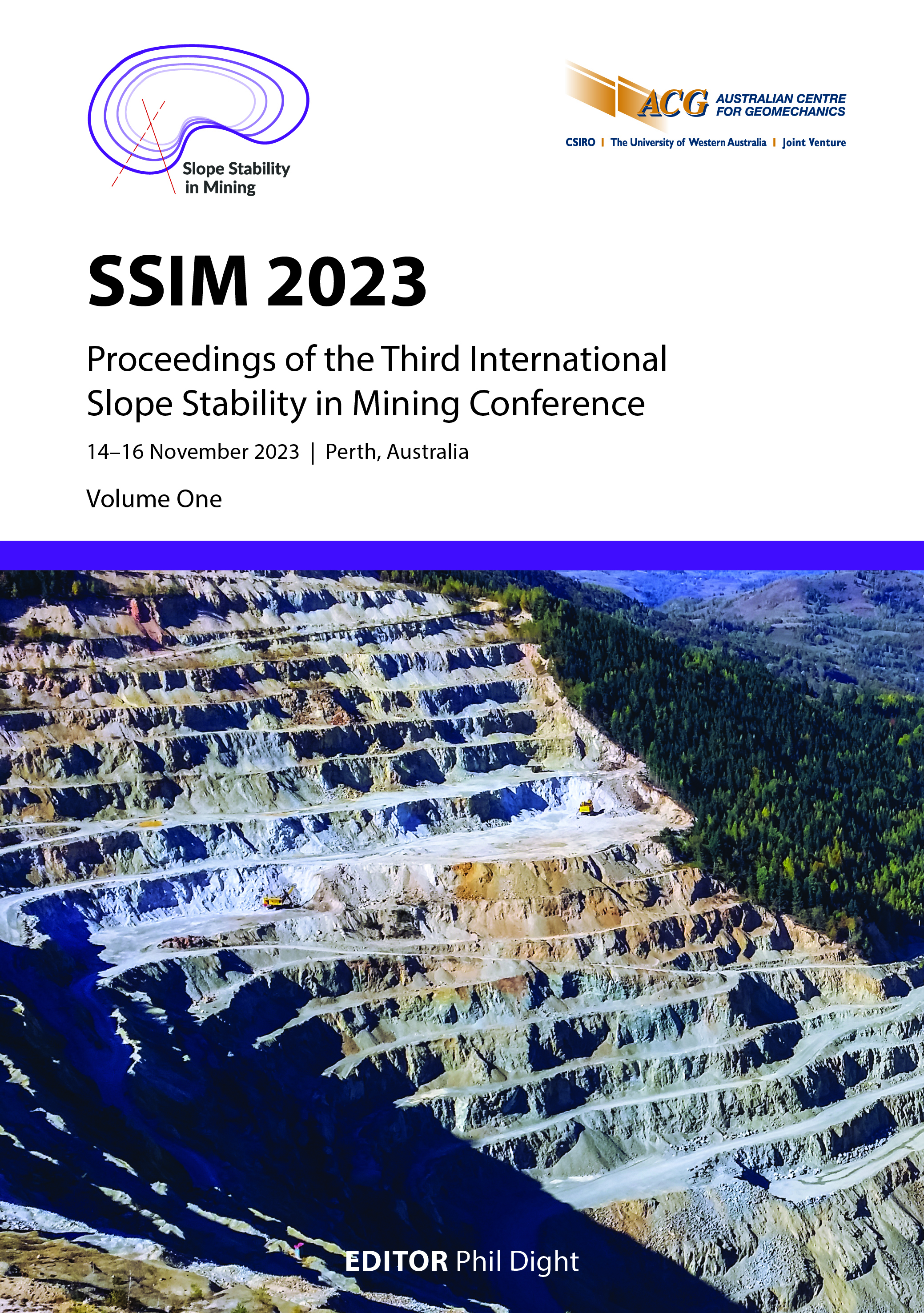A qualitative rockfall hazard screening tool for open pit mining

|
Authors: Farmer, M; Weir, FM; Fowler, MJ; Heaven, C |
DOI https://doi.org/10.36487/ACG_repo/2335_43
Cite As:
Farmer, M, Weir, FM, Fowler, MJ & Heaven, C 2023, 'A qualitative rockfall hazard screening tool for open pit mining', in PM Dight (ed.), SSIM 2023: Third International Slope Stability in Mining Conference, Australian Centre for Geomechanics, Perth, pp. 649-662, https://doi.org/10.36487/ACG_repo/2335_43
Abstract:
Rockfall is a key focus for geotechnical risk management and operational safety in the current mining environment. Due to limited site records and variability in rockfall conditions and outcomes, risk assessments are ideally completed by experienced practitioners who can make sound judgement calls. The reality in an operational space is that these assessments are often undertaken by site staff that are junior or inexperienced. This may result in a site operating at a higher than acceptable risk level due to rockfall. The development of a qualitative rockfall hazard screening tool for a benched mine slope is outlined in this paper. It is intended to be quick and easy, providing a structured, repeatable framework to assess rockfall hazard. The tool acts as a guide to assist staff in making important judgement calls about rockfall hazard in the field. The tool utilises a rating system to assess factors contributing to the intensity and likelihood of a rockfall occurring. Intensity factors include block size, block weight, slope height and geometry, all of which influence possible impact energy. Likelihood factors include slope geometry features, accumulation of loose material and batter condition. All ratings have been calibrated to conditions at a case study site utilising field trials and extensive sensitivity rockfall modelling. Once all factors have been assessed in the field and office, the intensity and likelihood factor totals are compared to a hazard matrix which allocates a rockfall hazard level for that slope. Applications for this tool include routine slope hazard assessments in active working areas, providing semiqualitative hazard information for risk assessments and generating rockfall hazard maps for communication to site staff. While this tool was developed for a specific case study site, it can be readily modified and calibrated for other sites.
Keywords: rockfall, open pit mining, hazard assessment
References:
Federal Office of Planning, Federal Office of Economics & Federal Office for the Environment, Forests and Landscapes 1997, Recommendations 1997 - Consideration of Hazards due to Ground Movements as Part of Land use Planning Activities, Bern.
Ferrari, F, Giacomini, A, Thoeni, K & Lambert, C 2017, ‘Qualitative evolving rockfall hazard assessment for highwalls’, International Journal of Rock Mechanics & Mining Sciences, vol. 98, pp. 88–101.
Giacomini, A, Buzzi, O, Renard, B, Giani, GP 2009, ‘Experimental studies on fragmentation of rock falls on impact with rock surfaces’, International Journal of Rock Mechanics & Mining Sciences, vol. 46, pp. 708–715.
Gili, JA, Ruiz-Carulla, R, Matas, G, Moya, J, Prades, A, Corominas, J, Lantada, N, Nunez-Andres, MA, Buill, F, Puig, C, Martinez-Bofill, J, Salo, LI & Mavrouli, O 2022, ‘Rockfalls: analysis of the block fragmentation through field experiments’, Landslides, vol. 19, pp. 1009–1029.
Guccione, DE 2020, An Experimental Investigation of Fragmentation Occurrence and Outcome in the Context of Rockfall, PhD thesis, University of Newcastle, Australia.
Pierson, LA, Davis, SA, Van Vickle, R 1990, Rockfall Hazard Rating System: Implementation Manual (No. FHWA-OR-EG-90-01), Oregon Department of Transportation, Oregon.
Pierson, LA, Gullixson, GF & Chassie, RG 2001, Rockfall Catchment Area Design Guide: Final Report SPR-1 (032), Oregon Department of Transportation, Oregon.
Ritchie, AM 1963, ‘Evaluation of rockfall and its control’, Highway Research Record, no. 17, pp. 13–28.
Rocscience Inc. 2022, RocFall2, computer software, Rocscience Inc., Toronto.
Varnes, DJ 1978, ‘Slope movement types and processes’, in RL Schuster & RJ Krizek (eds), Special Report 176: Landslides: Analysis and Control, Transportation Research Board, National Research Council, Washington, pp. 11–33.
© Copyright 2024, Australian Centre for Geomechanics (ACG), The University of Western Australia. All rights reserved.
View copyright/legal information
Please direct any queries or error reports to repository-acg@uwa.edu.au
View copyright/legal information
Please direct any queries or error reports to repository-acg@uwa.edu.au

